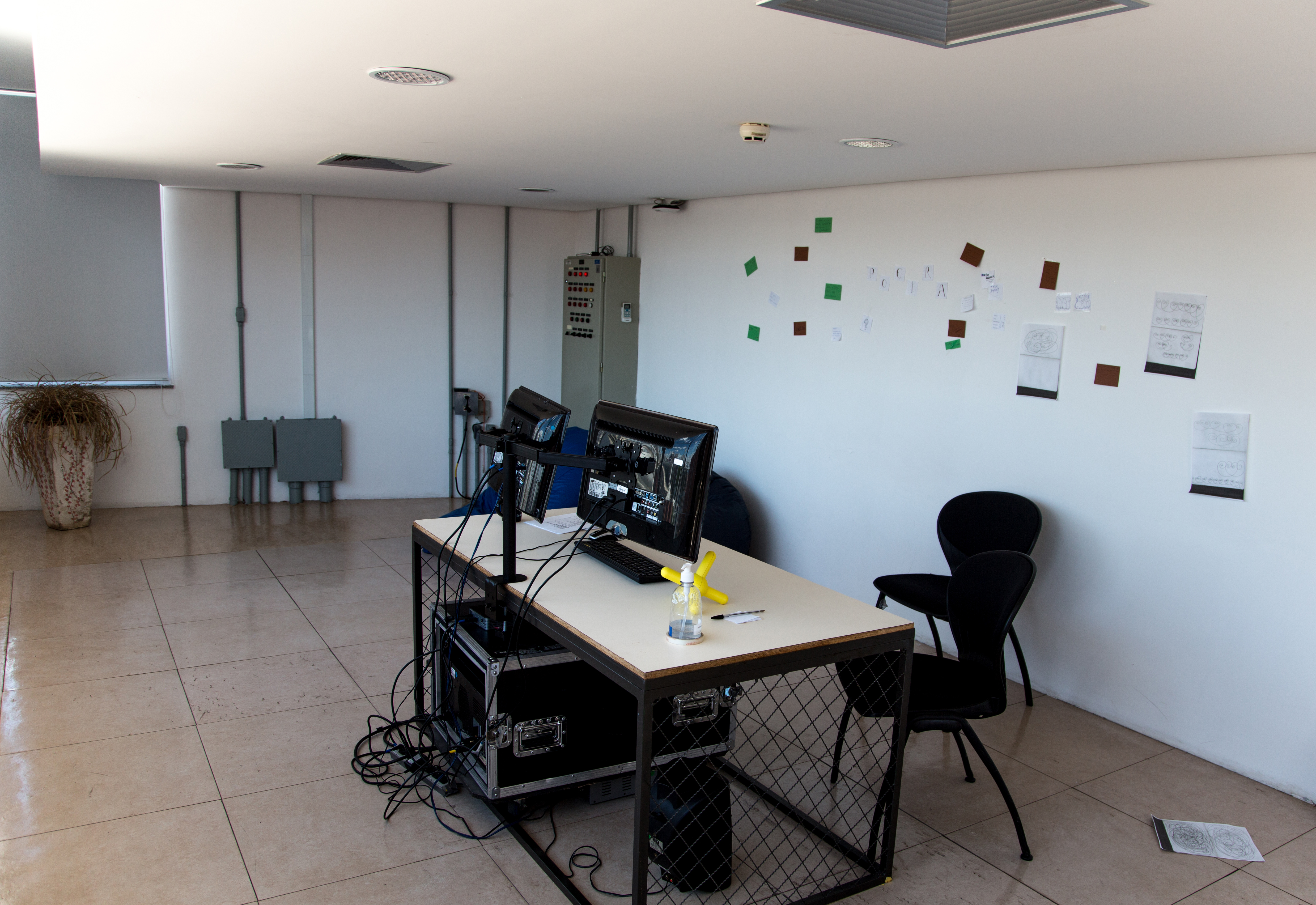Dust
Frestas Triennial,
Sorocaba Brazil
Curated by curated by Beatriz Lemos, Diane Lima and Thiago de Paula Souza
Produced by João Simões
Description:
This artwork takes the form of a ground control station, built to receive dust that has travelled from the Sahara desert across the Atlantic. This dust brings phosphorus, a mineral essential to the vitality of the Amazon rainforest.
These particles are carried along the same “trade winds” which were key to the colonial project. Through these miniscule particles, a complex and contradictory narrative of global economy and global ecology is told.
The artwork is composed of three parts: a satellite dish, which is typically used to receive television signals but is now used to collect dust, and a video installation, which is found in the ground control station below.
The ground control center sits atop an amphitheater and the last part of the installation takes place on the stage where these transatlantic travellers sculpturally presented. Making use of NASA Lidar data that traces dust plumes from space, the installation opens up the narrative to the role of dust in larger geographical stories.
![]()
![]()
![]()
![]()
Dual-channel video installation presesent on desk as ochestrated conference discussion.
Singe-channel version asking: “Who’s side is the wind on?”
Featuring:
Haseeb Ahmed, research-based artist
Professor Emmanuela Molinaroli, Geologist focussed on Saharan Dust Transport at Ca Foscari University, Venice, Italy
and Mozart Santos, artist and actor
![]()
Frestas Triennial,
Sorocaba Brazil
Curated by curated by Beatriz Lemos, Diane Lima and Thiago de Paula Souza
Produced by João Simões
Description:
This artwork takes the form of a ground control station, built to receive dust that has travelled from the Sahara desert across the Atlantic. This dust brings phosphorus, a mineral essential to the vitality of the Amazon rainforest.
These particles are carried along the same “trade winds” which were key to the colonial project. Through these miniscule particles, a complex and contradictory narrative of global economy and global ecology is told.
The artwork is composed of three parts: a satellite dish, which is typically used to receive television signals but is now used to collect dust, and a video installation, which is found in the ground control station below.
The ground control center sits atop an amphitheater and the last part of the installation takes place on the stage where these transatlantic travellers sculpturally presented. Making use of NASA Lidar data that traces dust plumes from space, the installation opens up the narrative to the role of dust in larger geographical stories.




Dual-channel video installation presesent on desk as ochestrated conference discussion.
Singe-channel version asking: “Who’s side is the wind on?”
Featuring:
Haseeb Ahmed, research-based artist
Professor Emmanuela Molinaroli, Geologist focussed on Saharan Dust Transport at Ca Foscari University, Venice, Italy
and Mozart Santos, artist and actor
